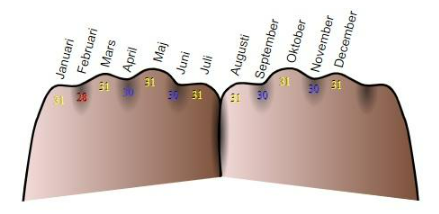5 Scientifically Proven Ways to Study Smarter and Faster

At CrunchGrade, our online tutors not only teach students the subject matter but also how to study. We asked some of our top tutors for their tips on how to study smarter and faster. Here are the five scientifically proven ways they recommend:
Strategy #1 – SQ3R Method
The SQ3R method – Survey, Question, Read, Recite, Review – is a classic study technique that’s more than 70 years old. It’s still one of the most effective ways to learn because it forces you to be active while you study. It is most suitable for learning factual information, such as history or science.
Here’s how it works:
- Survey the chapter or material you’re about to study. Skim the headings and look at the pictures.
- Generate questions about what you’ve just surveyed. What do you want to know more about?
- Read the chapter or material, answering your questions as you go.
- Recite what you’ve just learned by summarizing it in your own words or making up a mnemonic device.
- Review what you’ve learned by taking practice quizzes or doing related exercises.
The SQ3R method works because it forces you to think about what you’re trying to learn as you go. It is also spaced out over time, which is a proven way to study.
Strategy #2 – PQ4R Method
The PQ4R method – Preview, Question, Read, Reflect, Recite, Review – is similar to the SQ3R method, but with a few additional steps. It’s also been shown to be an effective way to learn. It is most suitable for longer texts, such as chapters in a textbook.
Here’s how it works:
- Preview the chapter or material you’re about to study. Skim the headings and look at the pictures.
- Generate questions about what you’ve just previewed. What do you want to know more about?
- Read the chapter or material, answering your questions as you go.
- Reflect on what you’ve just read. What are the main ideas? How does this information relate to what you already know?
- Recite what you’ve just learned by summarizing it in your own words or making up a mnemonic device.
- Review what you’ve learned by taking practice quizzes or doing related exercises.
The PQ4R method works because, like the SQ3R method, it forces you to think about what you’re trying to learn as you go. The reflection step is especially important for making connections and understanding concepts.
Strategy #3 – The Feynman Technique
The Feynman Technique is a simple but effective way to learn. It’s named after the Nobel Prize-winning physicist Richard Feynman, who used this technique to teach himself complex subjects. The Feynman Technique is most suitable for learning concepts and theories.

Here’s how it works:
- Choose a concept or theory you want to learn.
- Explain the concept or theory to someone else in simple terms, as if they knew nothing about the subject.
- Identify the gaps in your explanation. These are the things you don’t understand.
- Go back and fill in the gaps in your understanding.
- Once you understand the concept or theory, explain it again to someone else.
The Feynman Technique works because it forces you to simplify complex ideas and identify the gaps in your understanding. Explaining things to others is also a proven way to learn.
Strategy #4 – THIEVES Method
The THIEVES approach – Title, Headings, Introduction, Every first sentence in a section, Visuals and vocabulary, End questions, Summary – can help you learn effectively from texts such as articles and chapters in books.
Here’s how it works:
- Start by looking at the title and headings. What do you think the text will be about?
- Look at the introduction. What are the main points?
- Now read every first sentence in each section. These often contain the main points of the section.
- Look at the visuals and vocabulary in bold print. What do you notice?
- Finally, read the questions at the end of the chapter. These often contain key information.
- Now summarize what you’ve just learned in your own words.
You should consider using the THIEVES method when you need to learn from a text quickly and effectively. It can be especially helpful for exams.
Strategy #5 – Mnemonic Devices

Mnemonic devices are memory aids that can help you learn and remember information. There are many different types of mnemonic devices, but they all work by creating associations between the thing you want to remember and something else that is easier to remember.
Here are some examples of mnemonic devices kids often use are:
- Acronyms: Acronyms are made up of the first letter of a series of words. For example, the phrase “Every Good Boy Deserves Fudge” can be used to remember the notes on the lines of the treble clef: E, G, B, D, F.
- Rhyming: Rhymes are easy to remember because they are catchy. For example, the phrase “In 1492, Columbus sailed the ocean blue” is a rhyme that helps kids remember when Christopher Columbus discovered America.
- Chunking: Chunking is a way of breaking down information into smaller, more manageable pieces. For example, phone numbers are often chunked into two or three groups of four numbers: 1234-5678.
- The keyword method: The keyword method is a way of creating associations between the thing you want to remember and a keyword. For example, the keyword for the word “giraffe” might be “long neck.”
- Mind Maps: Mind maps are graphical representations of information. They can help you see the relationships between different concepts.
- The method of loci: The method of loci is a memory technique that involves imagining yourself walking through a familiar place, such as your house or school. To remember something, you picture it in one of the rooms or along the route.
The mnemonic devices above are just a few examples. There are many more out there, and you can even create your own. The important thing is to find a mnemonic device that works for you and the information you are trying to learn.
CrunchGrade tutors love to come up with new and innovative ways to help their students learn. If you’re struggling to remember something, ask your tutor for help. They might just have the perfect mnemonic device for you.
